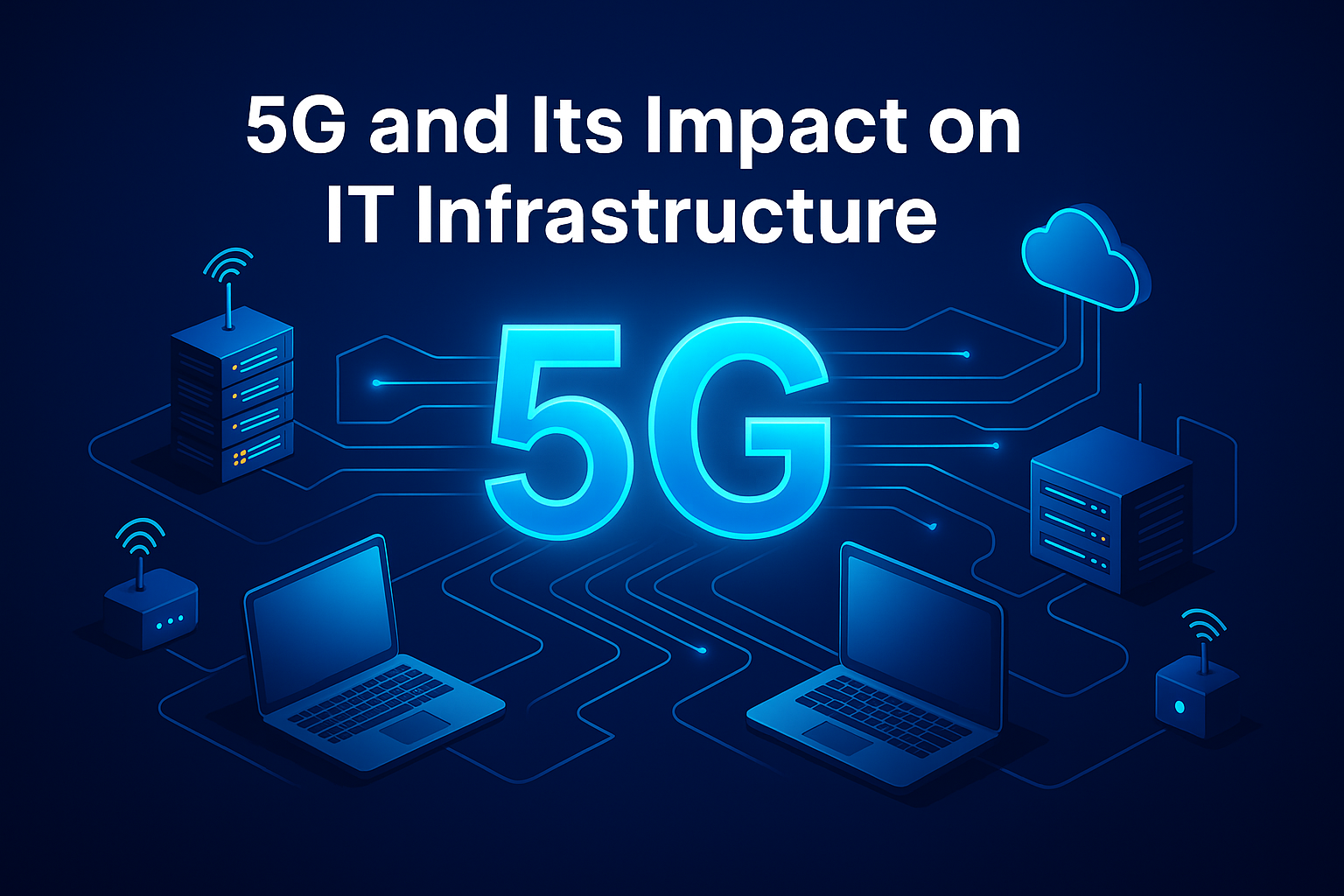 Loading Please Wait...
Loading Please Wait...
 Loading Please Wait...
Loading Please Wait...

The fifth generation of mobile networks—5G—is more than just faster internet on smartphones. It represents a transformative leap in connectivity, with profound implications for IT infrastructure, enterprise systems, and digital transformation initiatives worldwide. Unlike its predecessors, 5G is designed not only to deliver speed but also to provide low latency, massive device connectivity, and enhanced reliability.
For businesses, governments, and technology providers, 5G is not simply an upgrade; it’s the foundation for the next wave of innovation—edge computing, Internet of Things (IoT), autonomous vehicles, smart cities, and immersive technologies like AR/VR. However, the introduction of 5G also places new demands on IT infrastructure, requiring organizations to rethink how they build, secure, and scale their systems.
This blog explores what 5G is, how it differs from previous generations, and how it is reshaping IT infrastructure in terms of architecture, security, scalability, and business strategy.
5G stands for fifth-generation mobile networks, offering improvements over 4G/LTE in four major areas:
In essence, 5G enables real-time communication and supports data-intensive applications that were impractical on previous networks.
| Feature | 4G/LTE | 5G |
| Speed | ~100 Mbps – 1 Gbps | Up to 10 Gbps |
| Latency | 30–50 ms | ~1 ms |
| Device Capacity | Thousands per km² | 1 million per km² |
| Use Cases | Mobile internet, video | IoT, AR/VR, smart cities, autonomous tech |
The difference isn’t just quantitative—it’s qualitative. 5G unlocks applications requiring real-time responsiveness and massive scale, which were not feasible with 4G.
With ultra-low latency, 5G enables data processing at the network edge rather than in centralized data centers. Businesses must adapt IT infrastructure to support distributed edge nodes, closer to users and devices.
5G’s massive device density supports billions of IoT sensors, from industrial robots to wearables. IT infrastructure must scale to handle this influx of connections and the enormous data they generate.
The speed of 5G will create unprecedented volumes of data. Streaming 8K video, immersive AR/VR experiences, and real-time telemetry require robust IT infrastructure.
To manage the complexity of 5G, organizations will turn to Software-Defined Networking (SDN) and Network Function Virtualization (NFV).
More devices and faster connections mean an expanded attack surface. 5G IT infrastructure must integrate zero-trust security models, AI-powered threat detection, and end-to-end encryption.
To leverage 5G, businesses will build applications as cloud-native microservices deployed on containers (Docker, Kubernetes).
5G makes AR/VR, real-time gaming, and holographic communication mainstream. IT infrastructure must be upgraded to support high-bandwidth, low-latency experiences.
With 5G powering mission-critical systems like healthcare and autonomous transport, IT infrastructure must deliver 99.999% uptime.
The rollout of 5G will continue to accelerate over the next decade, with IT infrastructure evolving in tandem. Expect:
5G is not just an upgrade in speed—it’s a catalyst for digital reinvention.
5G is revolutionizing IT infrastructure by driving a shift toward edge computing, cloud-native applications, IoT expansion, and ultra-reliable networks. While challenges like security, costs, and interoperability remain, the opportunities far outweigh the risks.
For businesses, preparing for 5G means more than adopting faster internet—it means rebuilding IT strategies to support a hyperconnected, real-time world.
In the digital future, organizations that harness the power of 5G will not only transform their IT infrastructure but also redefine how they deliver value, innovate, and compete. 🚀